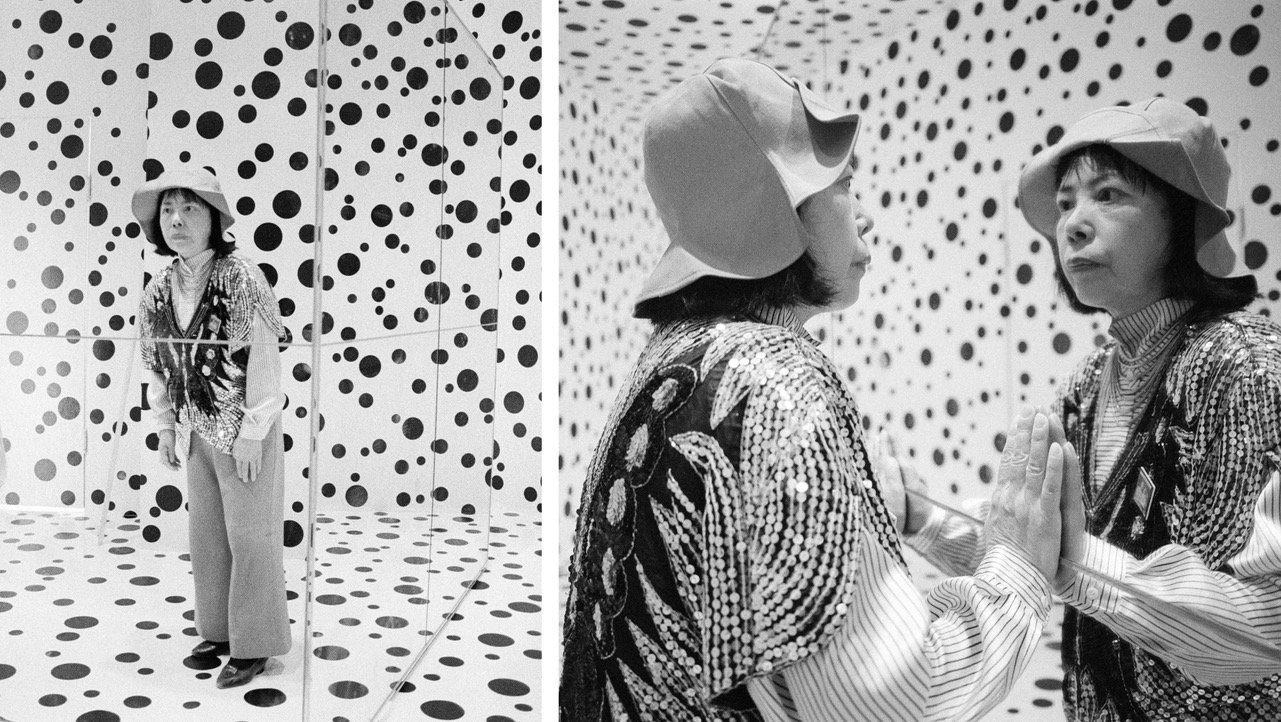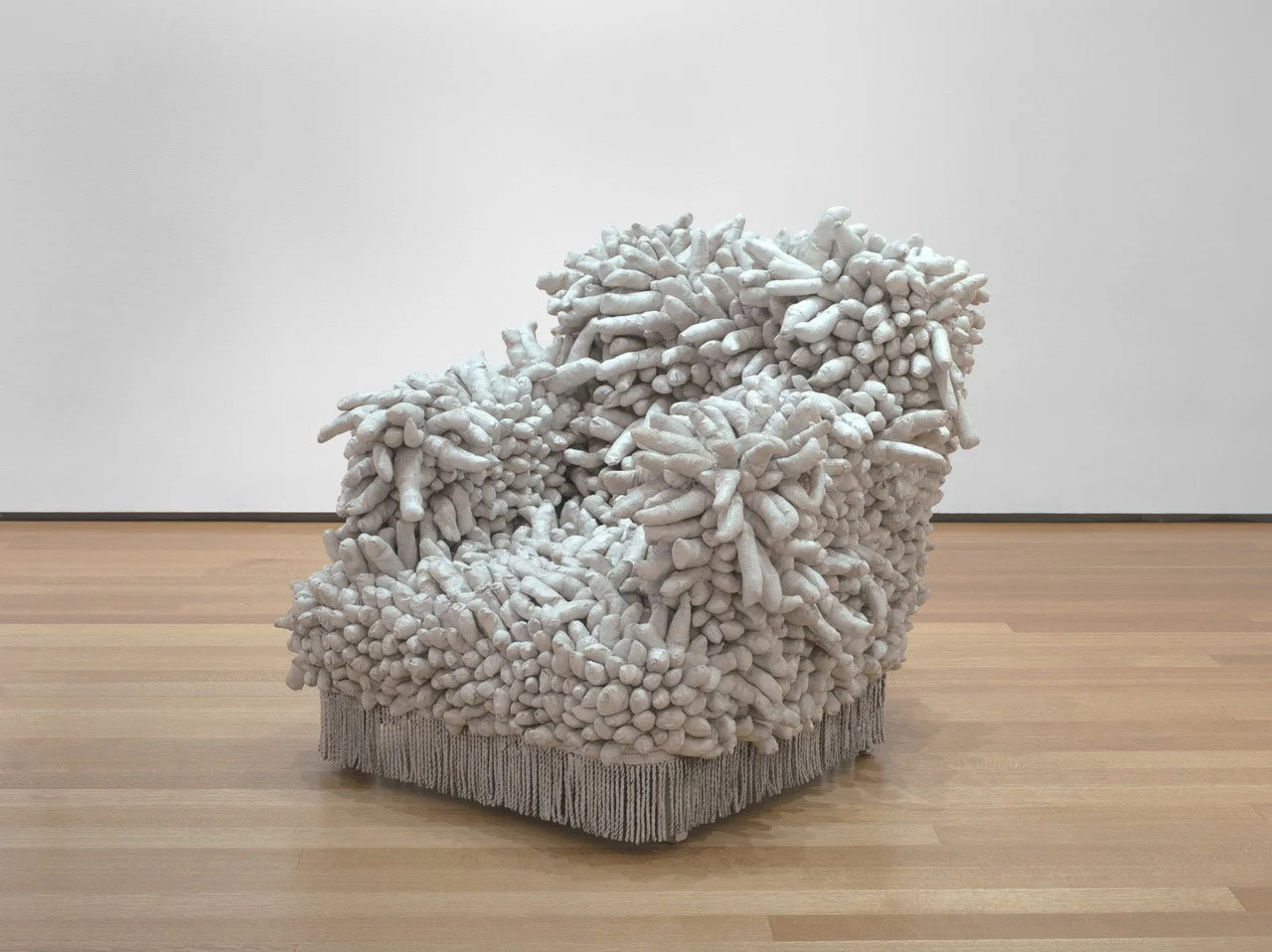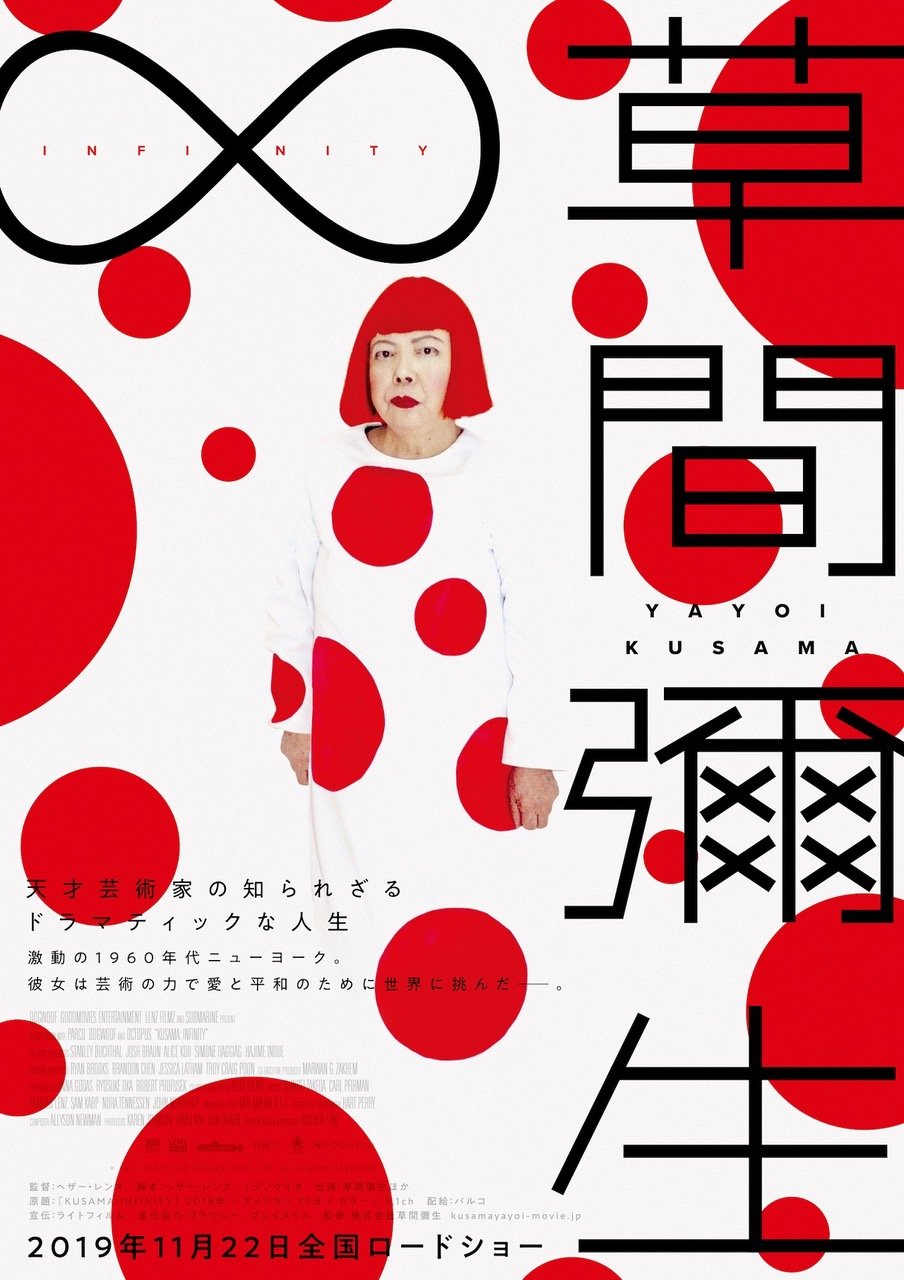From Surviving to Thriving
Happy 94th Birthday Yayoi Kusama
In the past week or so, as I began the second part of this post about Yayoi Kusama, I saw a film about Vincent Van Gogh, I was reminded of a passage about music in Proust’s A la recherche du temps perdu. I recalled an exhibition at the Musée Maillol from a few years ago. And I thought about how MFK Fisher explained why she wrote. That’s a lot to unpack, let me begin.
In the beautifully realized film directed by the artist Julian Schnabel, ‘At Eternity’s Gate,’ Vincent (played by Willem Dafoe) explained to anyone who would listen that he had to paint, that painting soothed him, calmed the voices in his head. (Figure 1)
Figure 1. Vincent Van Gogh, Self Portrait in Straw Hat
MFK Fisher, the writer whose elegant prose celebrate food and eating also said she had no choice. She wrote to a friend in 1947, “I…am as obviously a letter-writer as other people may be alcoholics or benzedrine-boys.” (Figure 2)
Figure 2. M.F.K. Fisher and her typewriter
For Kusama, it is the same. Her art is both her obsession and her self medication. The author Madeline Bocaro explained it this way, art is “Kusama’s self-prescribed aversion therapy for her diagnosed obsessional neurosis.… By translating her hallucinations into her work, she objectifies her fears …” She “creates, uses and in a sense, abuses multiples of …. images which plague her.” Penises have plagued Kusama ever since she was a child and saw her father having sex with his mistresses. Sculptures of flaccid phalluses fill her works and deflate her anxiety. (Figure 3)
Figure 3. Soft phalluses everywhere on everything, Kusama
Kusama works spontaneously, she doesn’t sketch, she just … creates. This is how Donald Judd, the art critic turned artist, who lived in the same building as Kusama in Manhattan, described what he saw, “She’d work right through the night… Most paintings were done in one shot… she would start in a corner and then go across.” (Figure 4)
Figure 4. Kusama with Infinity Net, photo, 1961, like one owned by Donald Judd, Kusama
Judd’s description reminded me of an exhibition at the Musée Maillol a couple years ago, Esprit es-tu là? (Figure 5) Several of the artists whose works were on display, recounted that when they started painting, it was as if they were being controlled by a spirit who also told them when it was time to stop.
Figure 5. Photograph of Augustin Lesage painting, 1927
And here’s something else, something that Vincent said that Proust also wrote about. Vincent was asked by a sympathetic priest, why nobody appreciated his paintings. Vincent told the priest that he was painting for posterity. He knew that people in the future would understand his work. In a passage in the second volume of À la recherche du temps perdu, Proust talks about how a piece of music will be met with indifference, even scorn when it is first played. Since music is written for the future, it will obviously be misunderstood by a composer’s contemporaries.
When Vincent died at age 37 (manslaughter, not suicide) he had sold only one painting. But what if he had lived to be 74, or 84, or even 94 (which Kusama will be on March 22)? He would have lived long enough to see his work appreciated by future generations. That it seems, is what has happened for Kusama. Like Vincent, Kusama sold very few paintings in her 30s, in her 40s. At 65, she became a superstar!
During the first decade after she returned to Japan from the United States, Kusama wrote poems and novels, designed clothes and painted. And she sought help. In 1977, she learned about a psychiatric hospital that focused on art therapy. She moved in and never moved out. The sculptor Camille Claudel, Rodin’s young lover, was placed and kept in a mental institution against her will. This is completely different. Kusama checked herself in and it is here that she chooses to stay. Except every day, all day, when she goes to her nearby art studio and works.
One critic wrote that the hospital in which Kusama has lived for the past 46 years is like her wife. It takes care of all the details, the necessities of life - like food and shelter. She concentrates on one thing - creating art. I guess we women don’t just need a room of our own, we need wives, too!
After Kusama left New York, she was mostly forgotten in the United States, her pivotal role in the movements in which she had participated ignored, credit for innovations given to male artists she had inspired. And then in 1993, she was invited to represent Japan at the 45th Venice Biennale. (Figure 6) She had been to Venice once before, in 1966, for the 33rd Biennale. (Figure 7) That time, as you’ll remember, she went as a gate crasher, representing nobody but herself. Her 'Narcissus Garden’ was a field of 1,500 hand sized plastic reflective balls that she offered for sale ($2 each). The Biennale authorities rejected Kusama and her piece, too commercial. But that’s exactly what she was protesting, the commercialization of the Biennale.
Figure 6. Photograph of Kusama during her installation at the Venice Biennale, Alex Majoli, 1993.
Figure 7. Narcissus Garden for Venice Biennale, photo of Kusama, 1966
The 45th Biennale was completely different. The Japanese Pavilion was a celebratory retrospective of Kusama’s work. It included her early net paintings, like the one Donald Judd had purchased (see above Figure 4) and soft sculptures, like Accumulation No. 1, the armchair covered with white phalluses. (Figure 8) There was a version of Narcissus Garden, this time with stainless steel balls which were definitely not for sale. (Figure 9)The centerpiece of the Pavilion was “Mirror Room (Pumpkin)” (Figure 10). In the center of a space painted yellow and filled with black polka dots, was a large mirrored cube. Kusama’s Infinity Rooms welcome spectators into her world, to experience her reality, a world of infinitely repeating dots, where they, like she, becomes part of the mirrored space. (Figure 11)
Figure 8. Accumulation No. I, Kusama, 1962
Figure 9. Narcissus Garden, Kusama,Fort Tilden on Rockaway Beach in Queens, NY 2018
Figure 10. Mirror Room, pumpkins, Venice Biennale, 1991-92
Figure 11. In a Kusama Infinity Room
What’s happened since? Quite a lot. Here’s a brief rundown. She has presented versions of Narcissus Garden at venues from the Whitney Biennale in Central Park in 2004 to the Jardin de Tuileries in Paris in 2010.
In 2011, Kusama collaborated with Marc Jacobs for Louis Vuitton. He had visited her studio in 2006 and she had presented him with a Vuitton bag covered with her trademark dots. He was won over. She decorated purses, watches and jewelry, leather goods, ready to wear clothes and shoes for Vuitton. They went on sale in pop-up shops around the world. Each shop was Kusama’ed - decorated with polka-dots and soft stuffed phalluses. Kusama explained that she collaborated with Louis Vuitton because of Marc Jacobs’ ”sincere attitude toward art”. (Figure 12)
Figure 12. Marc Jacobs with Kusama in Tokyo, Japan, 2011
In 2014, one of Kusama's Infinity Nets, like the ones Donald Judd bought in 1962 for $75, sold for $7.1 million, a record at the time for a living female artist.
In 2017, Kusama opened a 5 story gallery of her own work in Tokyo. (Figures 13, 14) She said, “In every way, I want to pour my love into humanity, and for a wonderful society without war, I want to live every day with the longing to fight for mankind.”
Figure 13. Kusama Museum, Japan, exterior
Figure 14. Exhibition, Kusama Museum, Japan
The following year, Heather Lenz’s film, ‘Kusama, Infinity,’ (Figure 15) finally came out. It was a project Lenz had been seeking financial backing for since 2001. She had read about Kusama as an undergraduate art history student. She then got an MFA in film, so she could make one about Kusama. Initially Lenz was told that Kusama didn’t have enough name recognition, that nobody would watch a film about a female artist. But by the time the film came out in 2018, all that had changed, Kusama’s ‘marketability’ had soared. And during the height of the @metoo movement, as outrageous as Kusama’s claims might once have seemed, nobody was surprised that Kusama had been written out of the history of pop art. That her original ideas had been appropriated by white men.
Figure 15. 'Kusama, Infinity,’ film by Heather Lenz, 2018
As Tim Adams (Guardian, 2018) wrote in his review of Heather Lenz’s film, now museum visitors all over the world wait in line for timed entries to experience Kusama’s infinity rooms. One example Adams cites is The Broad museum in Los Angeles that in 2018 sold 90,000 $25 tickets in an afternoon to its Kusama exhibition. Adams offered a one word explanation - Instagram!
As Lenz told Adams,“Most people have seen her work on Instagram but when they hear what she had to go through to achieve the success that eluded her for so long, they really connect with that. We did a few screenings and though most people knew the work, out of an entire audience only two people knew for example that she lived in a psychiatric hospital.”
People posting images of themselves in an Infinity Room (#YayoiKusama) makes other people want to post images of themselves in those same spaces. (Figure 16) Kusama’s art is being appreciated by posterity, a posterity that she, unlike Vincent Van Gogh, who died at 37, is alive to see at age 94.
Figure 16. Infinity Mirror Room, "Aftermath of Obliteration of Eternity,” Hirshhorn Museum, Washington, D.C., 2009
Short timed entries aren’t specific to Kusama of course. For example, when my husband and I first visited Giotto’s Arena Chapel in 1980, we just walked in and we stayed as long as we wished. I was able to explain every scene to him and the Vices and Virtues panels, too. When I took my son Nicolas there 15 years later, timed reservations were required. Before we entered the chapel, we passed through a room that disinfected us and our clothes. Our timed visit was so short that I barely had time to tell Nicolas about my favorite scenes (he was probably relieved)
As in the past, Kusama’s influence on other artists (like Damien Hirst and his Dots) and art movements continues, as do her examples of self presentation and self-promotion. (Figures 17, 18, 19, 20) Yet, she remains apart, leading by example rather than participation. Ahead of her time and removed from it by choice and circumstance.
Figure 17. Kusama, 2000
Figure 18. Kusama
Figure 19. Kusama, 2017
Figure 20. George Clooney ‘kusamized’ 2013
In 2021, after our collective Covid nightmare came to an end, Kusama’s temporary arrival at the New York Botanical Garden, began. There were indoor and outdoor displays - a Narcissus Garden and an Infinity Room. Pumpkin headed octopuses and polka dotted trees playing peekaboo with spectators who sometimes knew exactly how to dress for the occasion. (Figures 21, 22) The natural and the artificial came together for a joyous celebration of Kusama’s personal expression and our collective humanity.
Figure 21. Kusama Installation, New York Botanical Garden, 2021
Figure 22. Kusama Installation, New York Botanical Garden, 2021
Last year, with Kiki Smith and others, Kusama was commissioned to decorate, permanently this time, a new New York City subway station, Grand Central Madison. Kusama’s project is a 120-foot-long mosaic, a vibrantly multicolored composition, of smiling faces and organic shapes, pumpkin heads and abstract forms. (Figures 23, 24) Kusama explained in an email to Ted Loos (NYT) that the “train station venue inspired her to depict many different characters coming and going.” Of course, Kusama knows the New York subway system. She took subways for the 15 years she lived in the City. She told Loos about a nude happening she held in a subway station in 1968. It didn’t last long, according to Kusama, the police came in and escorted her and her dancers out. This time Kusama is here to stay in a work that celebrates the diversity of people who will pass through this subway station, perhaps a little happier than if these exuberant shapes weren’t there to welcome them and see them on their way.
Figure 23. Grand Central Madison subway station, Kusama, New York, 2022
Figure 24. Grand Central Madison subway station, Kusama, New York, 2022
And of course, now we are celebrating Kusama and commerce once again. Her second collaboration with Louis Vuitton after a decade. The first half of which dropped in January, the second half, just a few weeks ago. Is there a moral to this story? It may be this: If you can’t beat them, don’t join them, just outlive them !!! (Figures 25, 26)
Figure 25. Kusama manequin, Louis Vuitton, 2012
Figure 26. Kusama Manequin in front of La Samarataine, Paris, 2023
Copyright © 2023 Beverly Held, Ph.D. All rights reserved
Dear Reader, I hope you enjoyed reading this article. Please sign up below to receive more articles plus other original content from me, Dr. B. Merci!
And, if you enjoyed reading this review, please consider writing a comment. Thank you.


























